Industrial decor – 10 expert ways to introduce this versatile design trend
Industrial decor is back, but this time it's infused with rough and rugged style, raw materials and a color palette that is cooler than ever
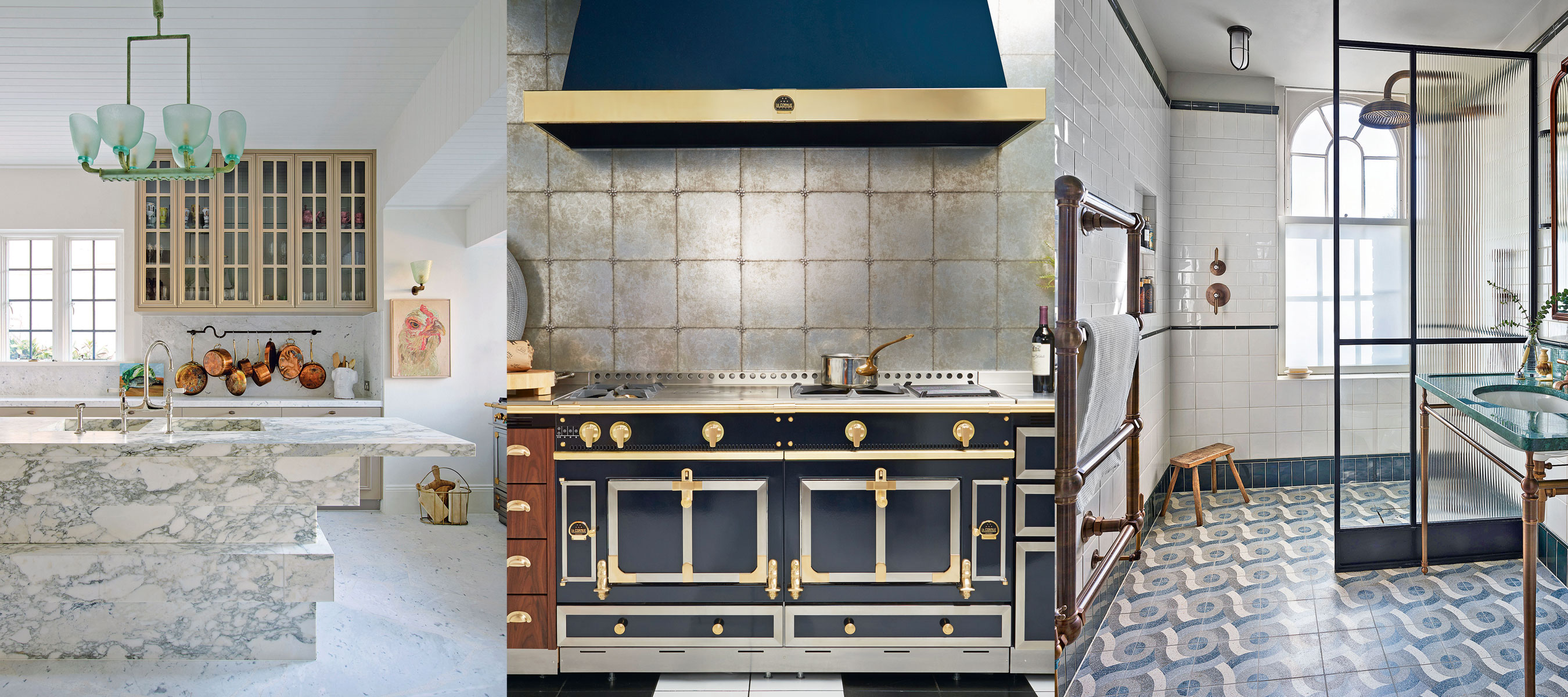

With their rugged looks and celebration of raw materials, industrial decor ideas are now more popular than ever – and it is easy to see why this look is desired so highly, even now.
Blossoming in the 1970s, the industrial décor trend came to prominence when it became popular to transform warehouses, factories and mills into living spaces. These abandoned spaces were converted into urban havens.
This is a look that celebrates practicality, imperfections and wear and tear. Materials such as exposed brickwork, concrete and tarnished metals allowed world's best interior designers to explore new textures, colors and forms.
In the last few decades, the interior design trend has increased in popularity tenfold. Here we explore the very best of the industrial décor trend – and how to effectively and beautifully use this popular interior design aesthetic in your home.
Industrial decor ideas – how to embrace this popular trend
The industrial look is all about versatility; this is what gives industrial interiors their unmistakable aesthetic. So, when deciding how to decorate your home, the practicality and simplicity of your chosen pieces should always be at the forefront of your mind.
When it comes to decorating ideas and furnishings, an industrial interior should be practical and uncomplicated. Clean lines, minimalist forms and stark contrasts are a must, but this simplistic approach does not mean you have to compromise on comfort or warmth.
1. Go faux a metal-effect tile
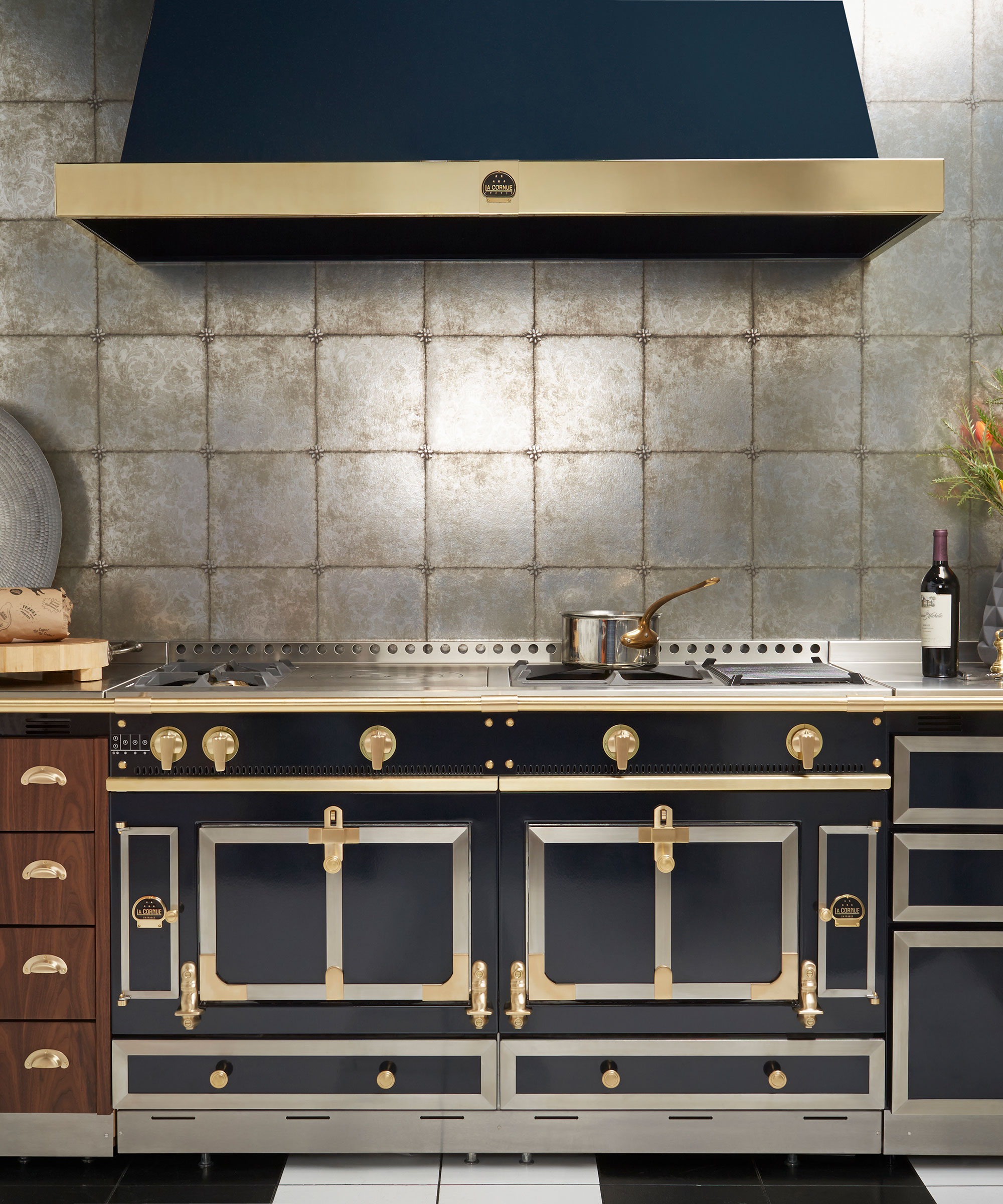
High-shine finishes and metal backsplash ideas are causing a stir in the industrial decor space, but you need not go for the real deal. Here, metallic-effect porcelain tiles come in designs with full-body glazes that convincingly emulate the shimmer of real metals.
‘A metallic-effect tiled backsplash is the perfect backdrop for a metal-trimmed range cooker in an industrial-style kitchen,’ says Camille Syren, chef de projets, La Cornue. ‘Porcelain kitchen tile ideas are a resilient choice since they don’t require sealing and are easy to keep clean.’
2. Take an old meets new approach to decorating
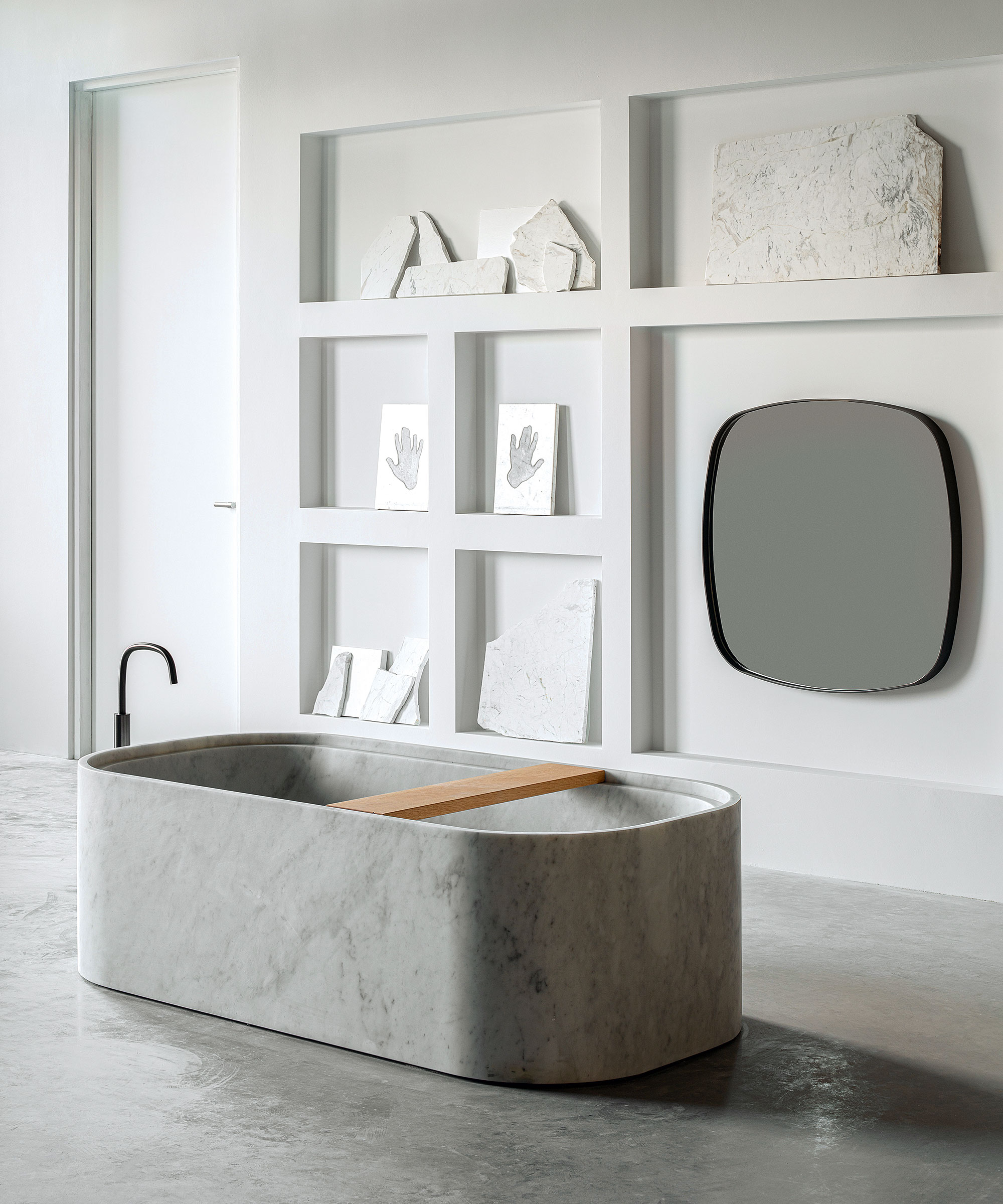
Classic marble may be centuries old, but this versatile material can feel just as relevant in a contemporary or industrial setting. Carved from a solid piece of Carrara marble, the crisp, modern lines of Piet Boon’s freestanding bath for Cocoon is a case in point. Shown here on polished concrete flooring with a neutral backdrop, the designer’s signature clean lines truly celebrate Carrara’s gentle veining.
3. Add interest with tonal and textural elements
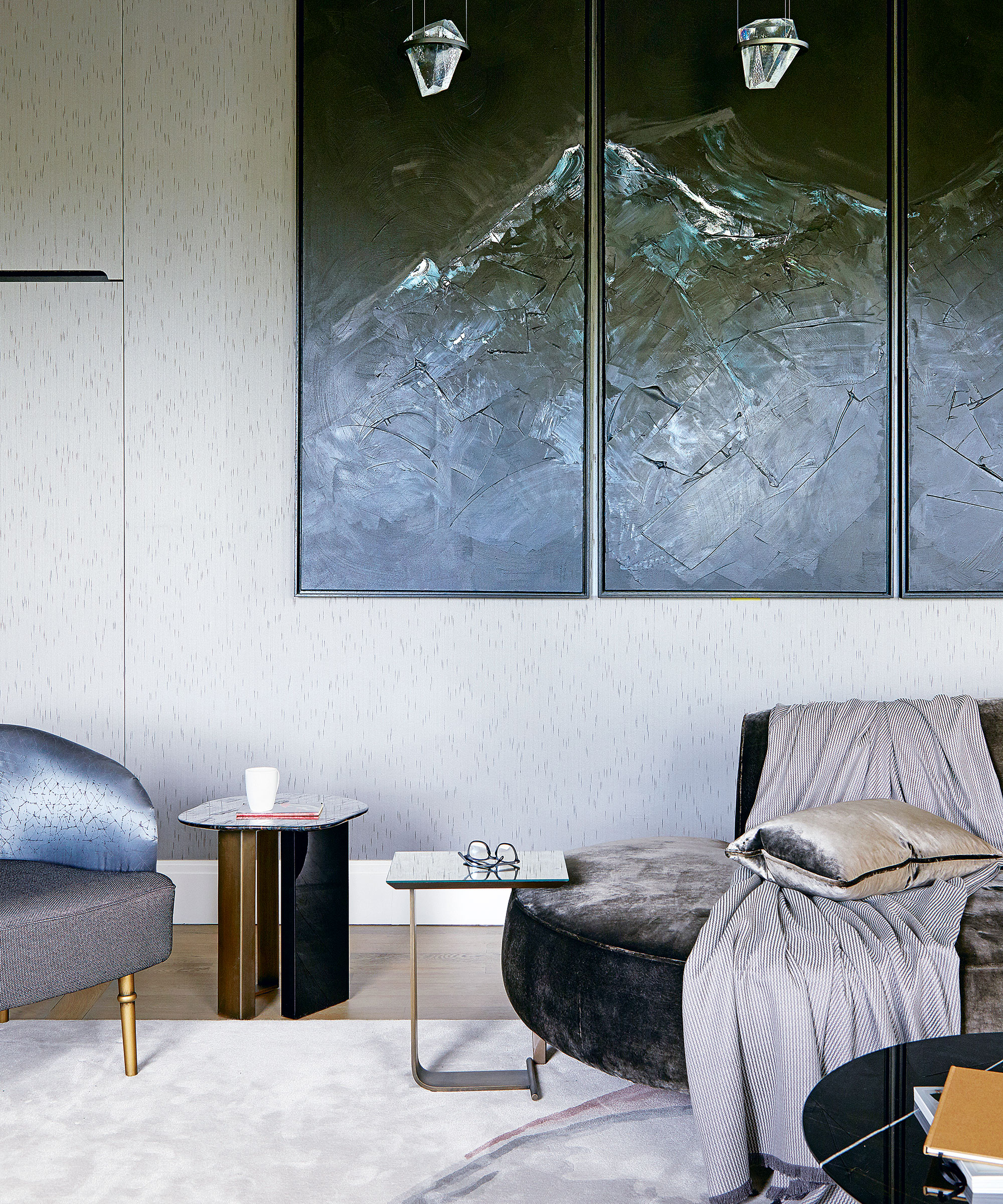
Industrial and minimalist décor go hand-in-hand, and should be considered in tandem when planning an industrial living room. With busy modern lives, homeowners are now more aware of their furniture choices and aim to find a balance between streamlined industrialism and luxurious comfort for their living room ideas.
In this apartment, a monochrome color scheme is a good industrial color choice that requires an element of bravery, as it requires careful editing and a strong design eye.
This type of interior can also appear ‘flat’ if you don’t introduce texture and subtle tonal variety. But put together carefully, it’s a design-led way to enhance a minimalistic living room.
4. Go for distinctive details
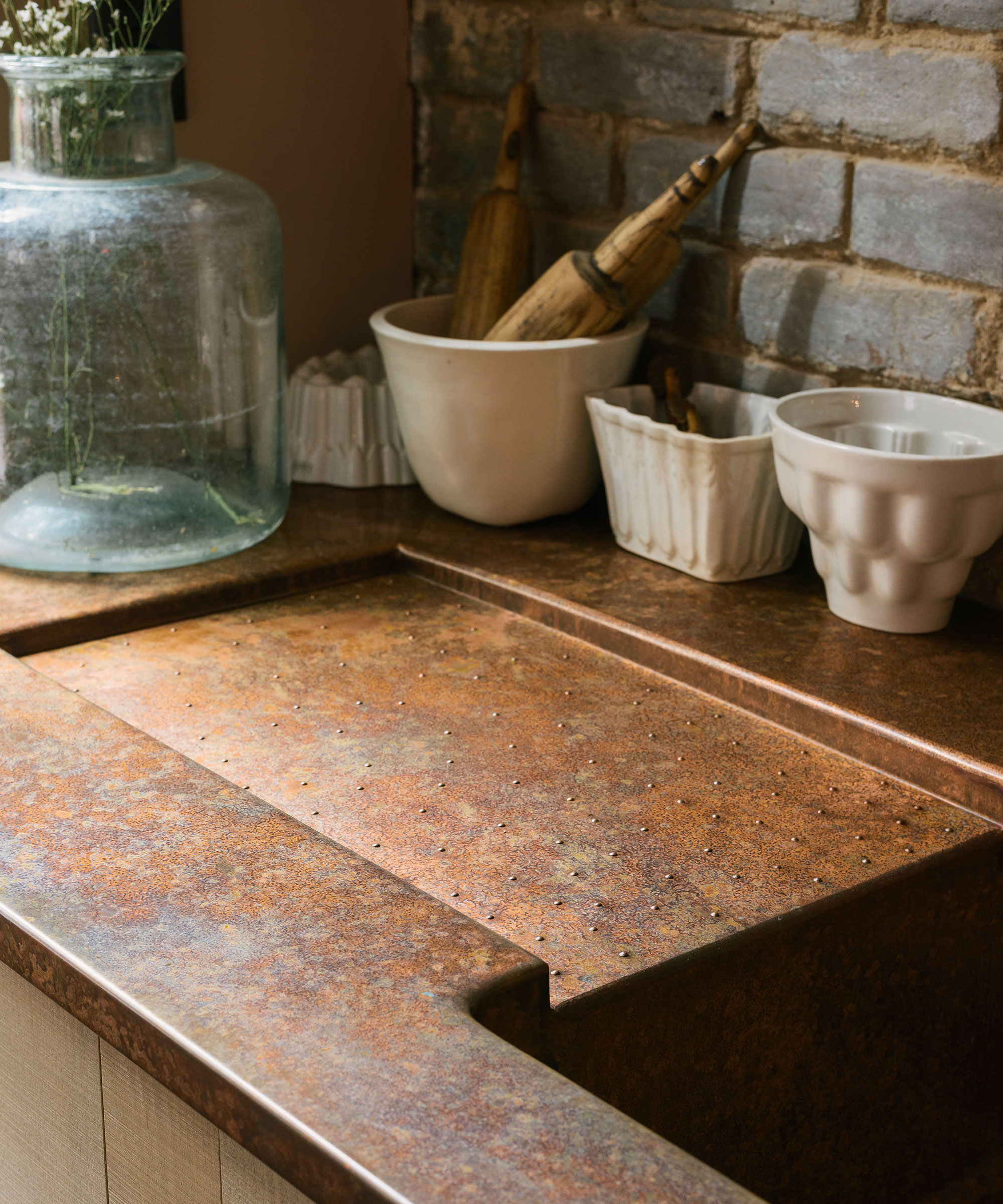
Paying attention to the smaller details when fabricating surfaces can have a much bigger impact than you might imagine, not to mention bring daily joy. In lieu of standard draining grooves, go for something a little more unexpected, like this deeply beautiful sunken drainer by deVOL. The aged copper surface is already lovely but the simple addition of tiny raised domes, created by hammering the underside of the copper, lifts it beyond the ordinary.
On a practical note, sunken drainers are much more effective at containing and channelling away water than routed grooves and will help keep air-drying dishes safely contained.
5. Divide and conquer
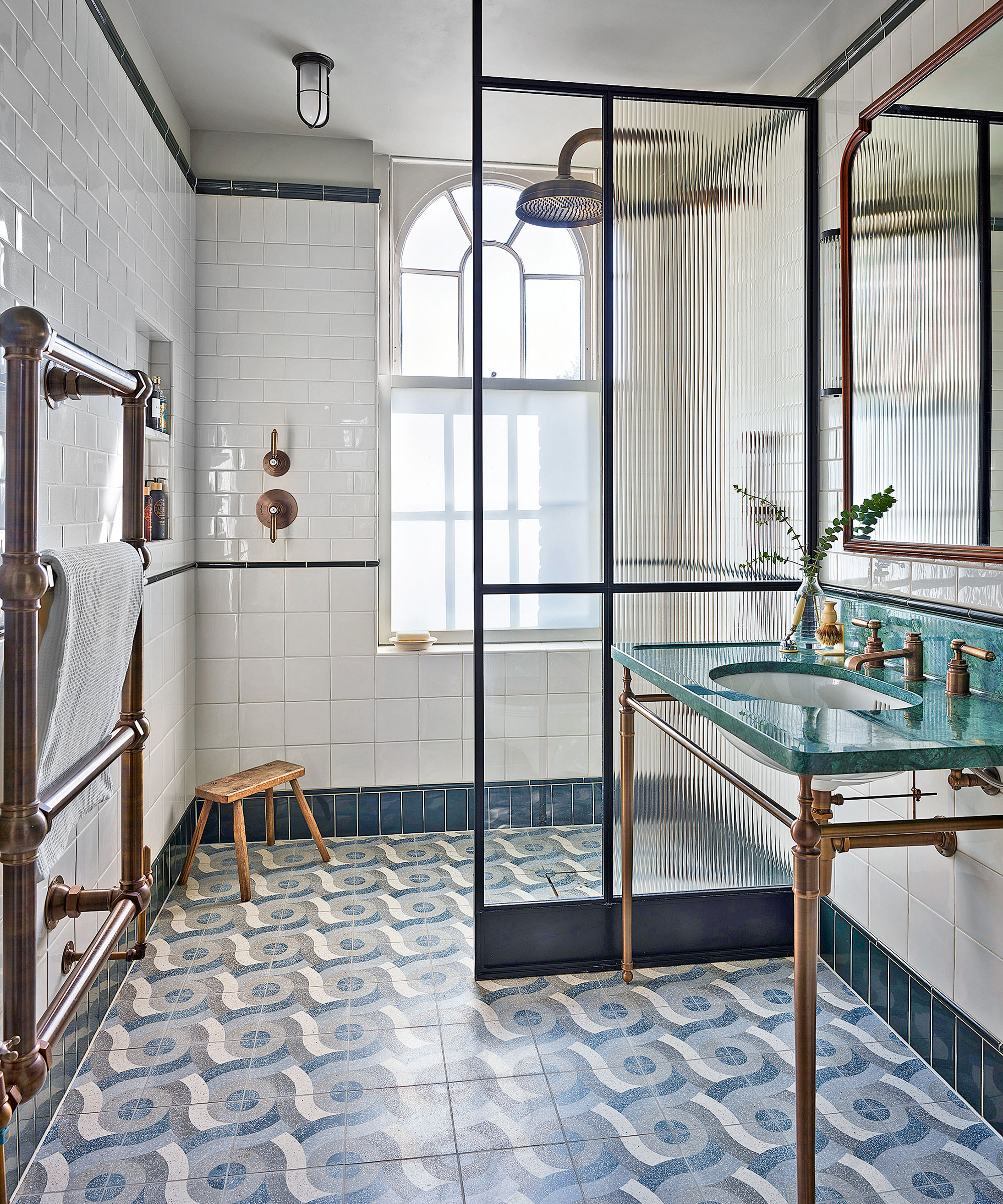
A tall metal-framed screen lends an industrial edginess to this wet room idea, while keeping water away from the beautiful marble-topped vanity. Making a feature of this dividing point boosts the design, particularly the mix of fluted and plain glass. The former adds an element of privacy, and the latter lets in maximum light from the window. Locating the controls well away from the showerhead is also a smart idea, allowing the water to reach a comfortable temperature before you step inside.
6. Invest in a statement metal hood
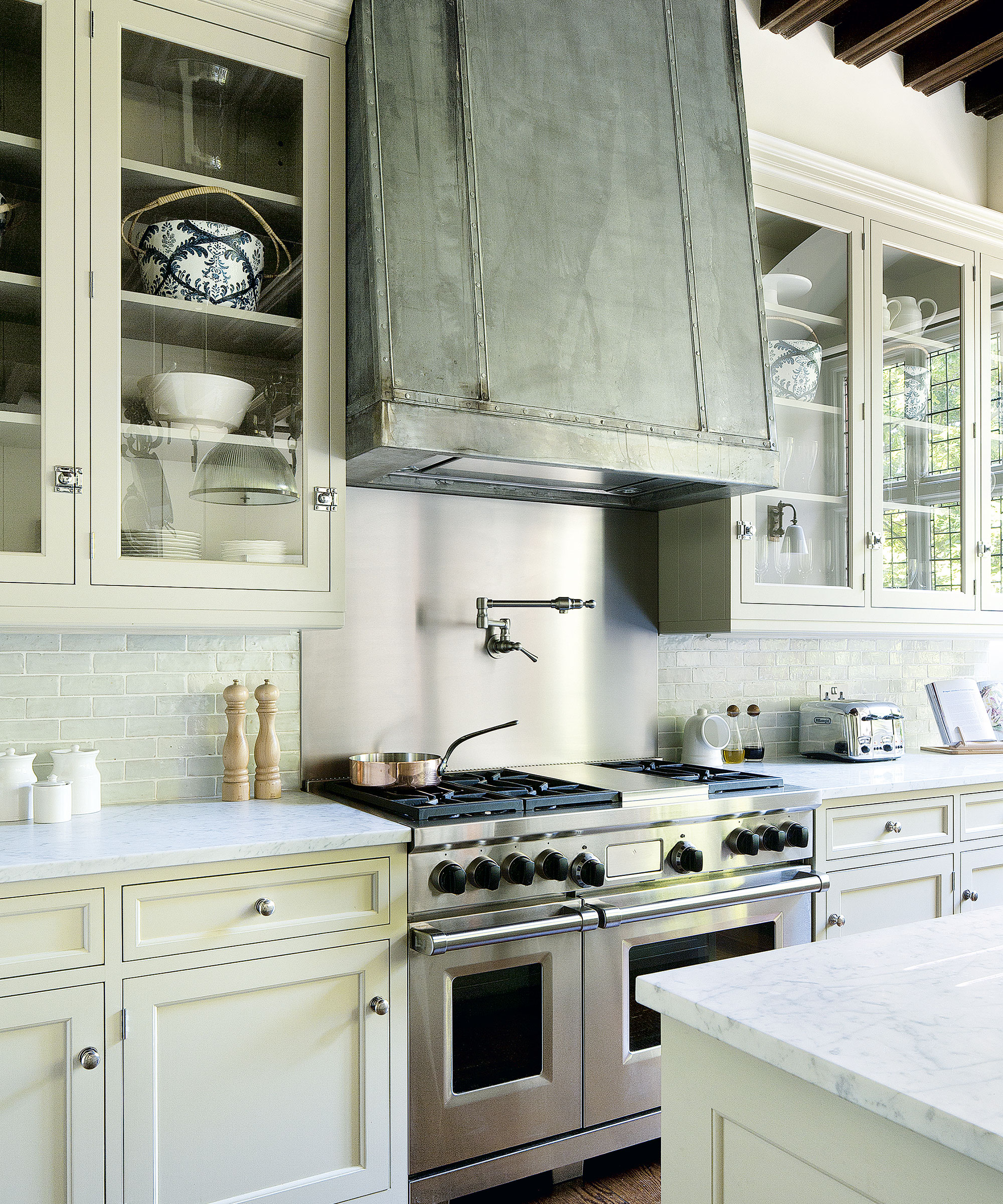
While they are generally considered something of a necessary evil in the UK, the American approach to extractor hoods has long been more celebratory, with custom-made designs in unusual finishes making strong and defining statements in kitchens across the land. This trend looks set to take off in a big way, too, especially in eye-catching metal surfaces.
‘Aesthetically, adding a striking extractor canopy to a kitchen scheme is a chance to interrupt with shape and sculpture all the angular lines of cabinets and panels,’ says Bruce Hodgson of Somerset-based Artichoke Ltd. ‘This etched zinc extractor canopy is made using specialist crafts and traditional materials, throwing a spotlight on our handmade values as well as a nod to the past.’
7. Create a wonder wall
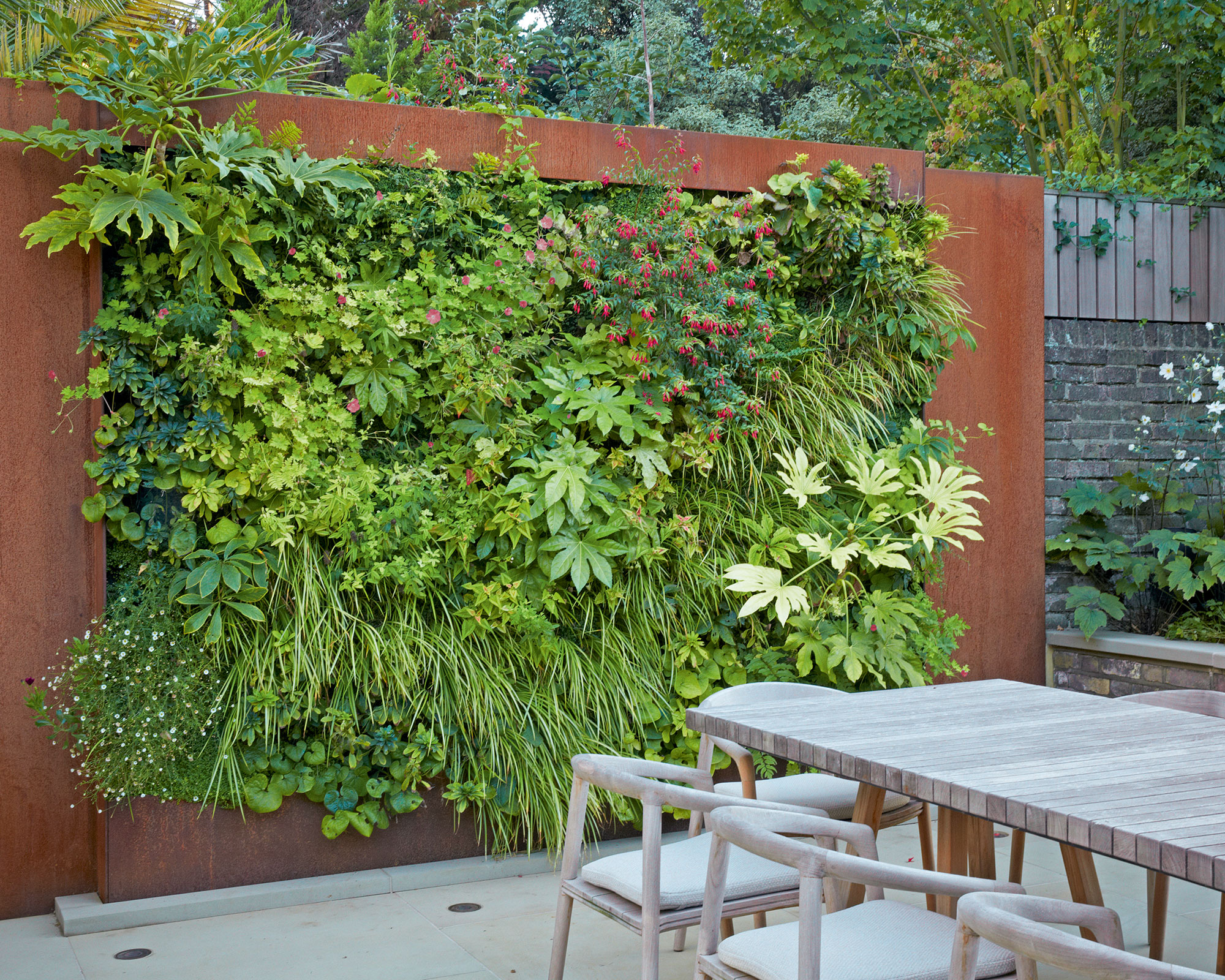
Living wall ideas were once the domain of temporary, designer installations. Now, pioneering commercial sites, where tapestries of plants can be seen adorning the sides of prestigious hotels, shops and office buildings, have become the must-have decorative design solution for residential and urban gardens.
Tom Massey Studio worked with Tapestry Vertical Gardens to design this living wall, one of two high walls covered in vertical greening for the client’s urban garden in London. ‘These walls create a sense of enveloping nature,’ says principal designer Tom Massey. ‘Here, this creates an inviting focal point for the dining area and includes ambient lighting, which is perfect for evening entertaining.’
8. Introduce subtle color to an industrial space
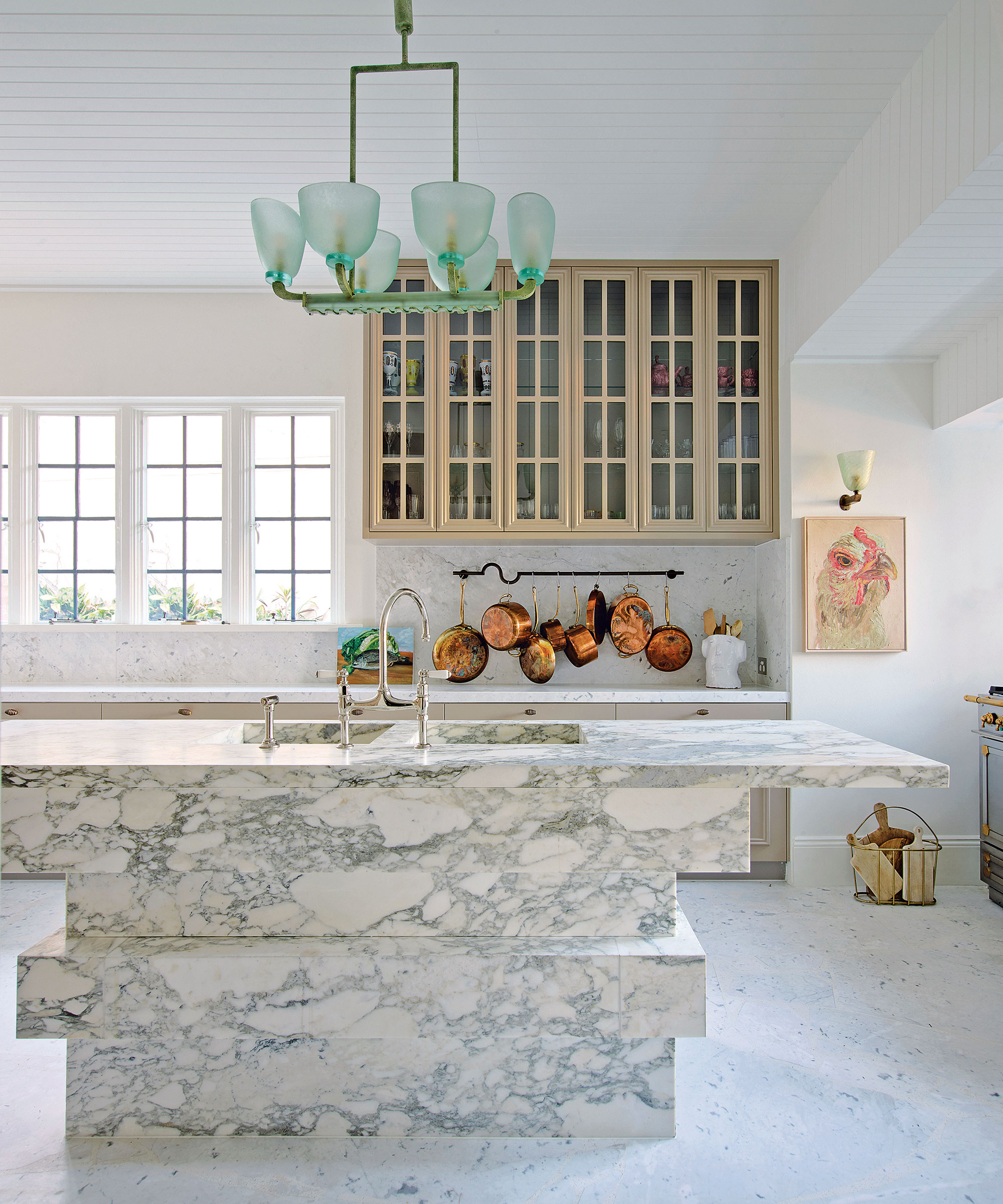
Accent colors are supplementary shades that often contrast the primary colors used in the kitchen with the aim of dialling up the drama – just a little. However, accent colour can also play a quieter, more complementary role, as American interior designer Tamsin Johnson demonstrates in this industrial meets farmhouse kitchen.
In a stronger shade, the arresting mid-century pendant light by Gio Ponti would have stolen too much attention from the sculptural Arabescato marble island below, which is absolutely the star of the show. But in delicate pale green, the vintage glass fitting plays a balancing role that softens the hard angles of the island and lends a harmonising, feminine touch.
9. Build using upcycled materials
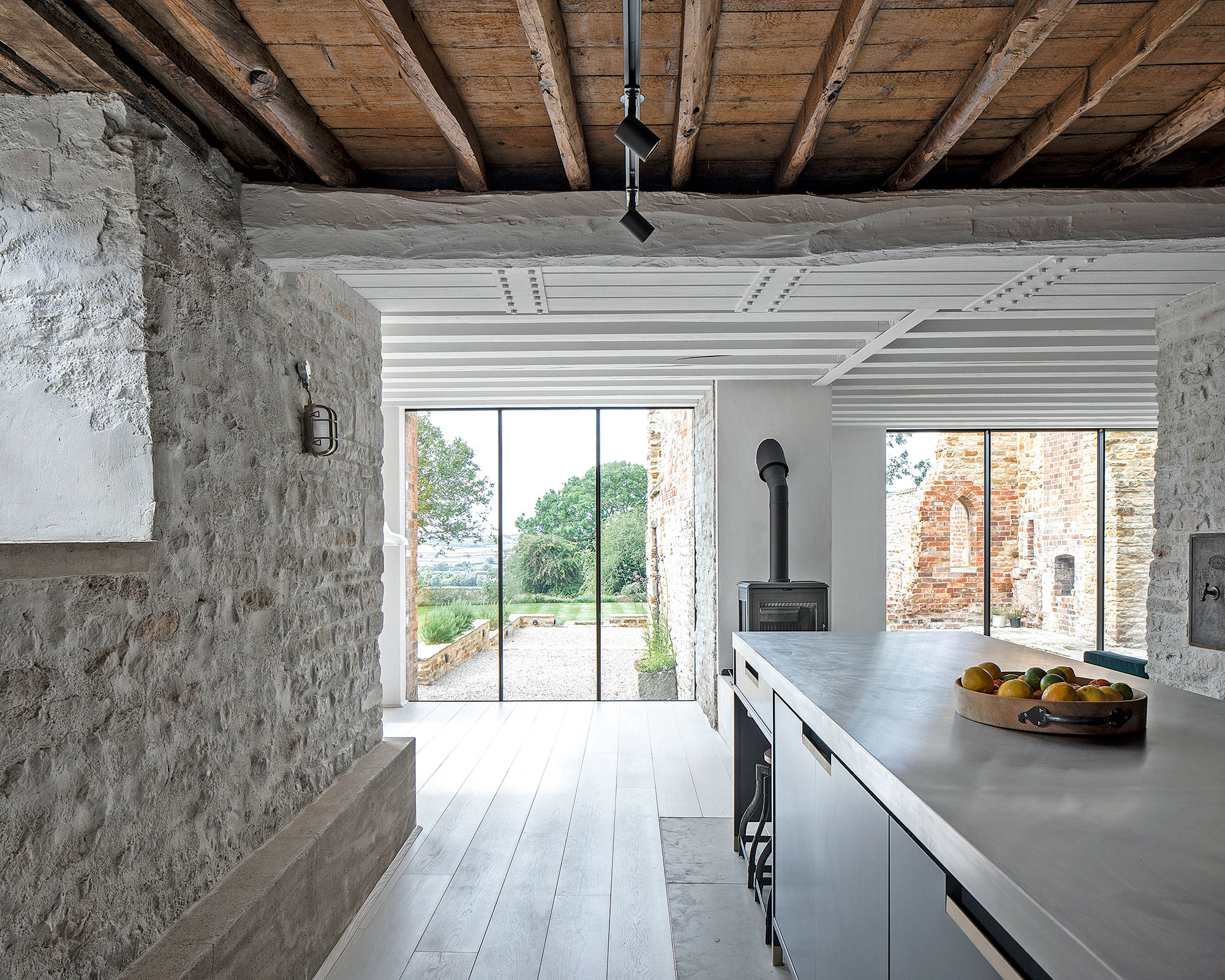
A ruined cattle shed seems an unlikely starting point for a new home but architect Will Gamble thought otherwise and his vision created The Parchment Works for his clients who love industrial décor style and sustainable materials.
‘Initially, the owners wanted to demolish the former parchment factory,’ says Will, ‘but I convinced them the ruins could be celebrated through a sympathetic intervention.’ Will’s design created ‘a building within a building’, where two lightweight volumes were inserted within the old walls. ‘I exposed the beams of the shed, as well as steelwork in the new parts. The clean lines of the kitchen (above) helped to juxtapose the uneven nature of the older structure (top), making a contemporary intervention set within a historic context.’
10. Combine industrial decor with classic cabinetry
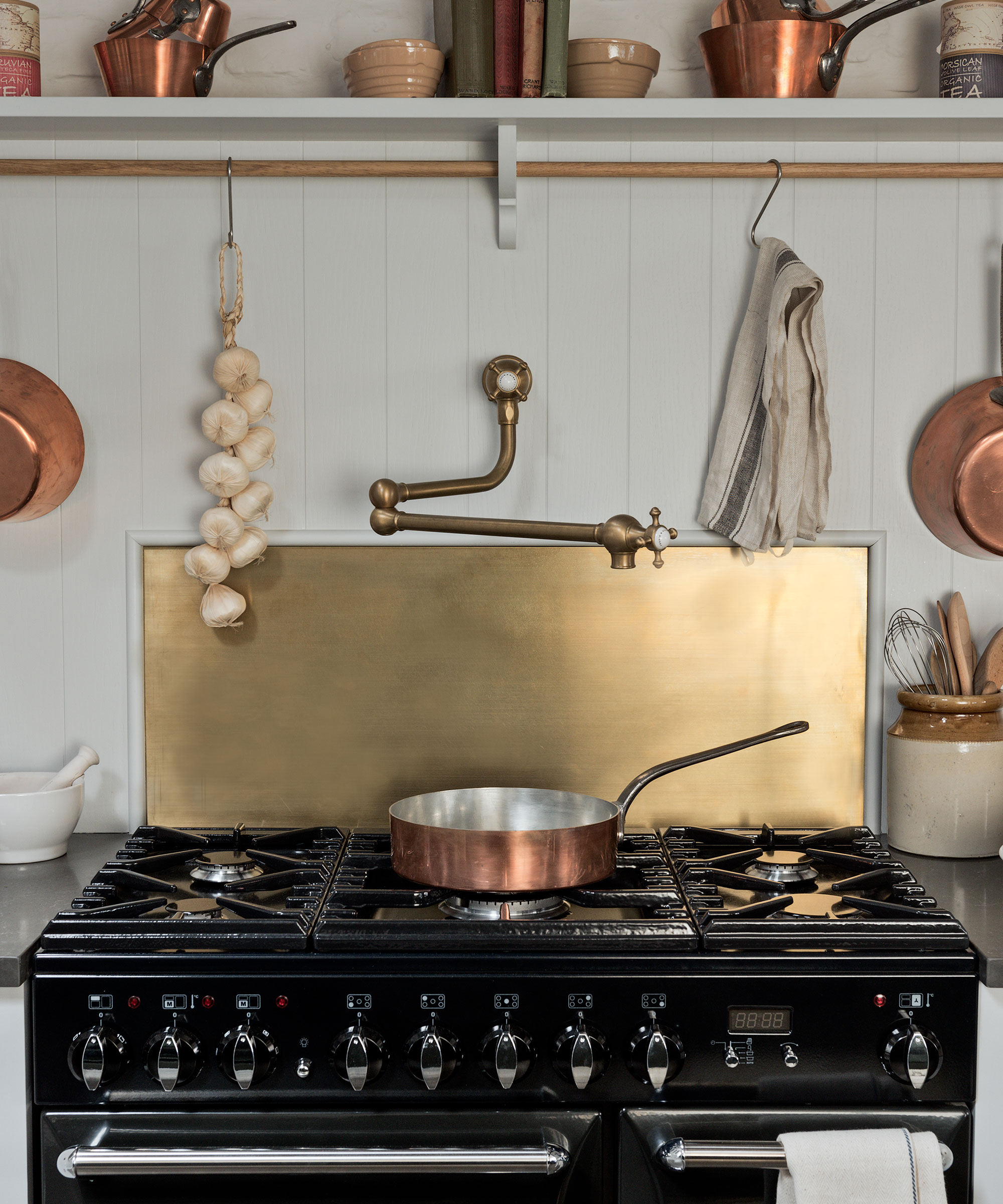
If you don't wish to turn your entire kitchen into an industrial haven, look to pairing factory-style elements with the classic good looks of traditional kitchen ideas. Here, a neat surround hides the raw edges of this custom-cut backsplash while highlighting the rich brass within.
‘Framing the backsplash was about exploring the idea of blending in and standing out,’ explains kitchen designer Charlie Kingham. ‘The frame draws attention to the material, making it feel extra special, but also helps smooth the transition between the bright metal and classically painted Shaker paneling surrounding it.
How do I make my room look industrial?
The mainstay of industrial design is unfussy, practical furniture with flat-fronts – it’s a sleek look and one that is ageing incredibly well. In fact, much of what we consider to be modern design dates back to the 1930s. Even the sleek, handleless designs so typical of modern industrial design right now have been around since the 1960s.
For a while, industrial décor seemed to take stark to a whole new level. Furniture and kitchen cabinets were pared down and invariably white gloss, but it’s a look that can be too clinical for many. Thankfully, the current trend for industrial style and minimalist décor is a far warmer affair. The clean lines and a fuss-free finish are still there but with texture, surface finish and soft color that bring character and are easy to live with. The simple lines show off clever engineering, form and finish, and the latest engineering techniques have helped give new life to materials previously out of favor.
Sign up to the Homes & Gardens newsletter
Design expertise in your inbox – from inspiring decorating ideas and beautiful celebrity homes to practical gardening advice and shopping round-ups.

Jennifer is the Digital Editor at Homes & Gardens. Having worked in the interiors industry for several years in both the US and UK, spanning many publications, she now hones her digital prowess on the 'best interiors website' in the world. Multi-skilled, Jennifer has worked in PR and marketing and occasionally dabbles in the social media, commercial, and the e-commerce space. Over the years, she has written about every area of the home, from compiling houses designed by some of the best interior designers in the world to sourcing celebrity homes, reviewing appliances, and even writing a few news stories or two.
-
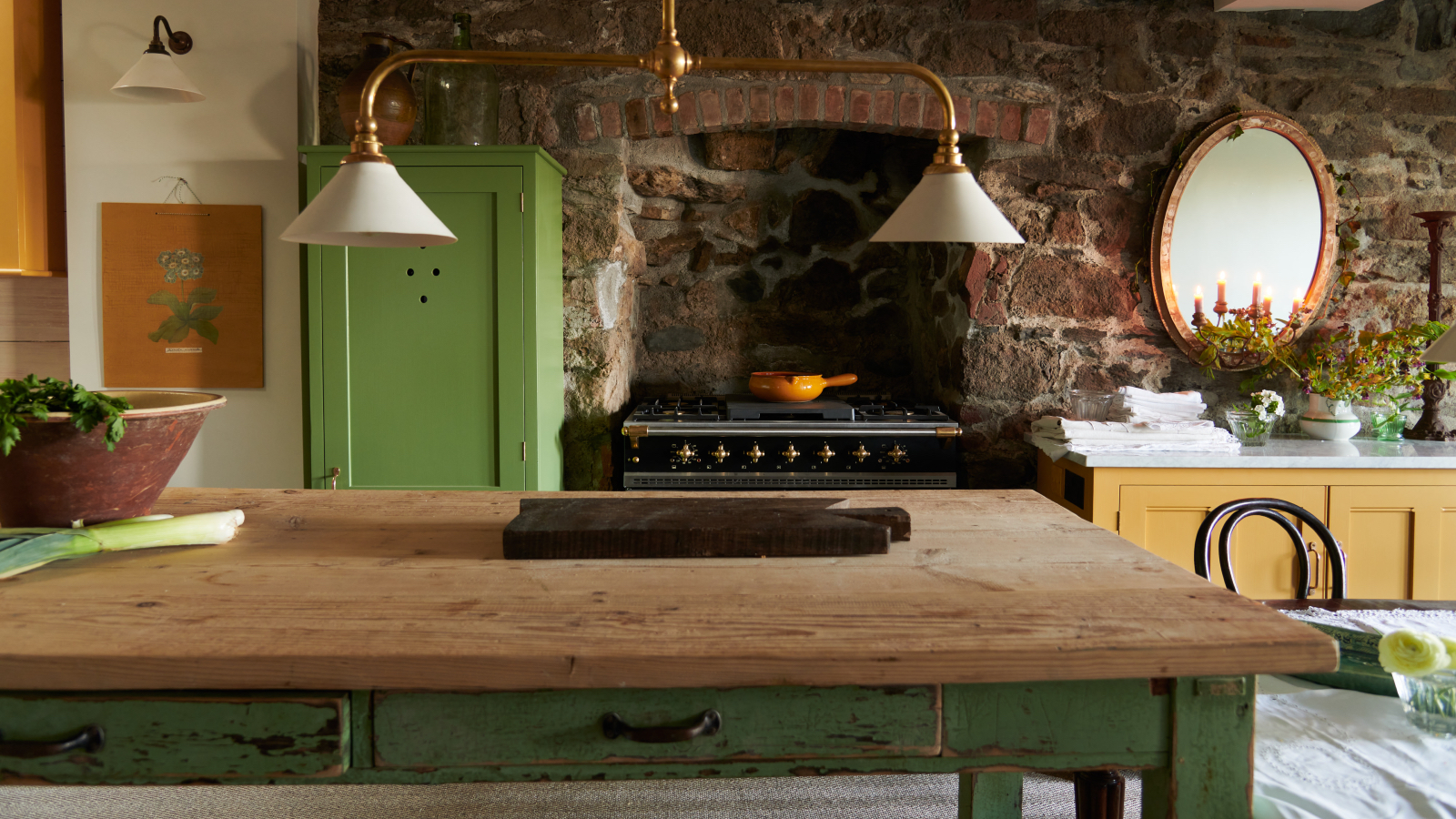 9 things you can clean with glycerin – this cheap and natural cleaner is perfect for indoor and outdoor use
9 things you can clean with glycerin – this cheap and natural cleaner is perfect for indoor and outdoor useFrom patio furniture to silverware, this hydrating and gentle cleaning agent will work miracles
By Ciéra Cree Published
-
 Martha Stewart's houses – inside her most iconic properties, from Cantitoe Corners to Turkey Hill
Martha Stewart's houses – inside her most iconic properties, from Cantitoe Corners to Turkey HillThe lifestyle guru built her legacy around her homes, some of which are the most recognized homes in modern American history – we explore her portfolio
By Megan Slack Published